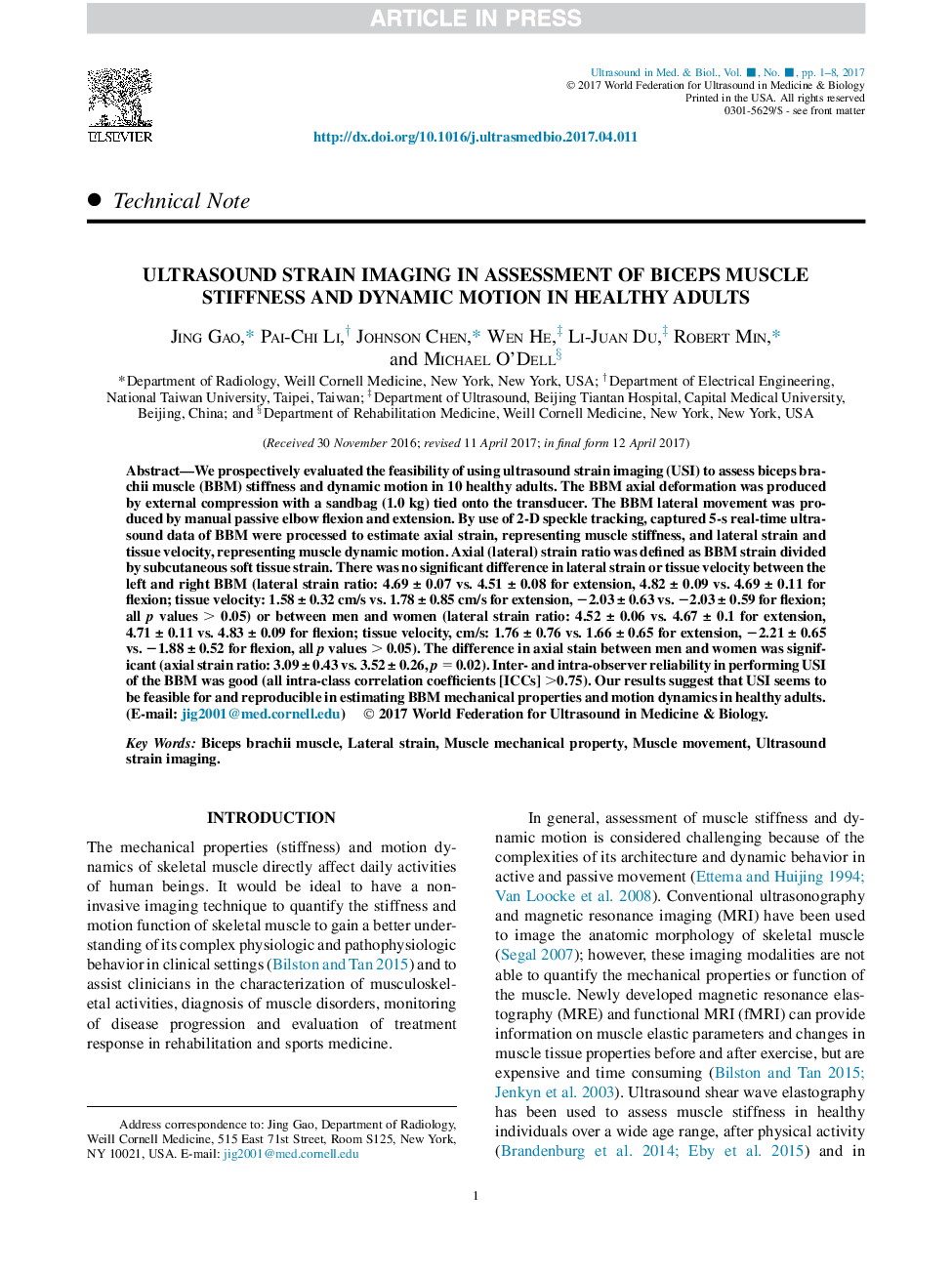| Article ID | Journal | Published Year | Pages | File Type |
|---|---|---|---|---|
| 5485684 | Ultrasound in Medicine & Biology | 2017 | 8 Pages |
Abstract
We prospectively evaluated the feasibility of using ultrasound strain imaging (USI) to assess biceps brachii muscle (BBM) stiffness and dynamic motion in 10 healthy adults. The BBM axial deformation was produced by external compression with a sandbag (1.0 kg) tied onto the transducer. The BBM lateral movement was produced by manual passive elbow flexion and extension. By use of 2-D speckle tracking, captured 5-s real-time ultrasound data of BBM were processed to estimate axial strain, representing muscle stiffness, and lateral strain and tissue velocity, representing muscle dynamic motion. Axial (lateral) strain ratio was defined as BBM strain divided by subcutaneous soft tissue strain. There was no significant difference in lateral strain or tissue velocity between the left and right BBM (lateral strain ratio: 4.69 ± 0.07 vs. 4.51 ± 0.08 for extension, 4.82 ± 0.09 vs. 4.69 ± 0.11 for flexion; tissue velocity: 1.58 ± 0.32 cm/s vs. 1.78 ± 0.85 cm/s for extension, â2.03 ± 0.63 vs. â2.03 ± 0.59 for flexion; all p values > 0.05) or between men and women (lateral strain ratio: 4.52 ± 0.06 vs. 4.67 ± 0.1 for extension, 4.71 ± 0.11 vs. 4.83 ± 0.09 for flexion; tissue velocity, cm/s: 1.76 ± 0.76 vs. 1.66 ± 0.65 for extension, â2.21 ± 0.65 vs. â1.88 ± 0.52 for flexion, all p values > 0.05). The difference in axial stain between men and women was significant (axial strain ratio: 3.09 ± 0.43 vs. 3.52 ± 0.26, p = 0.02). Inter- and intra-observer reliability in performing USI of the BBM was good (all intra-class correlation coefficients [ICCs] >0.75). Our results suggest that USI seems to be feasible for and reproducible in estimating BBM mechanical properties and motion dynamics in healthy adults.
Keywords
Related Topics
Physical Sciences and Engineering
Physics and Astronomy
Acoustics and Ultrasonics
Authors
Jing Gao, Pai-Chi Li, Johnson Chen, Wen He, Li-Juan Du, Robert Min, Michael O'Dell,
